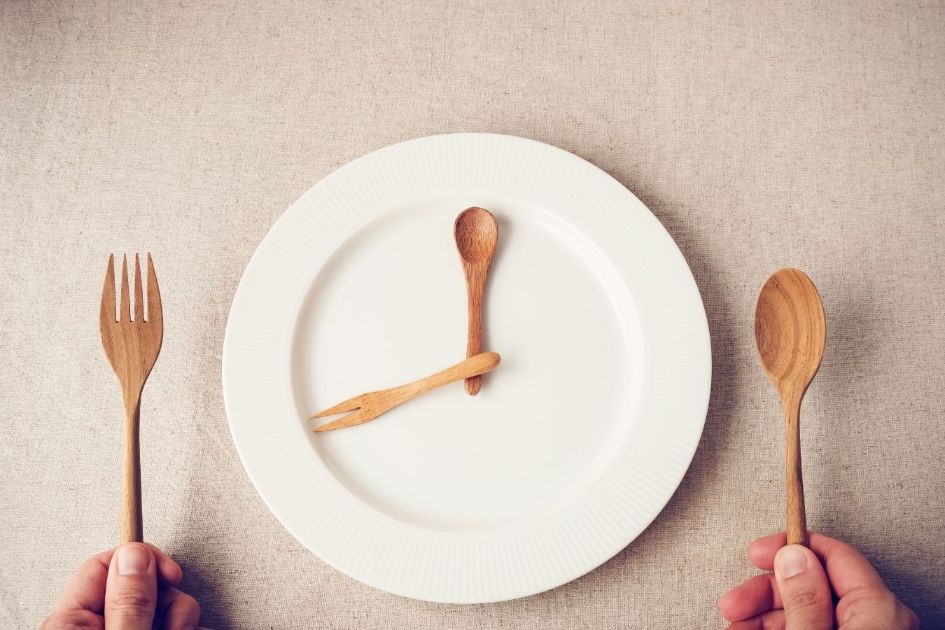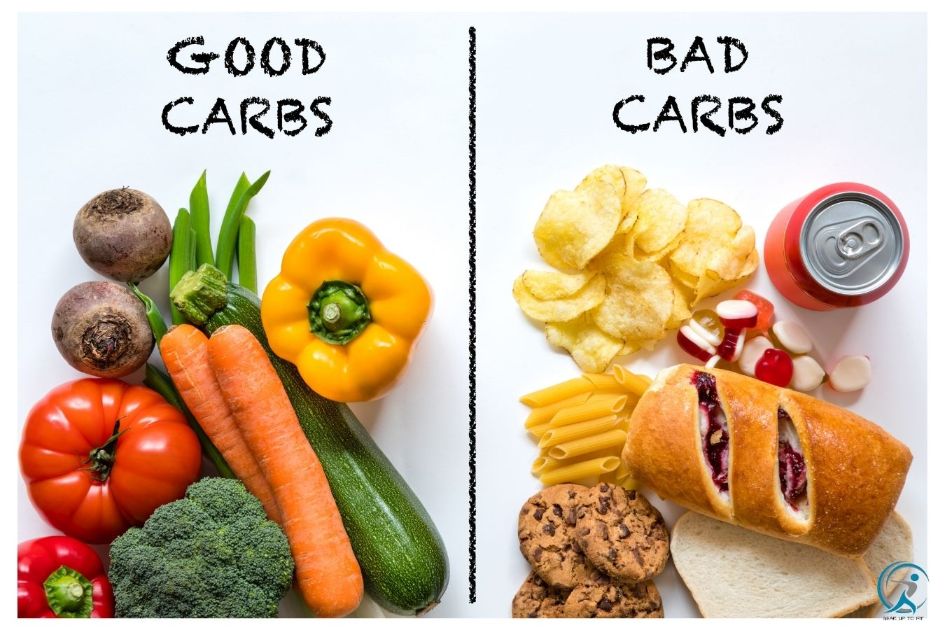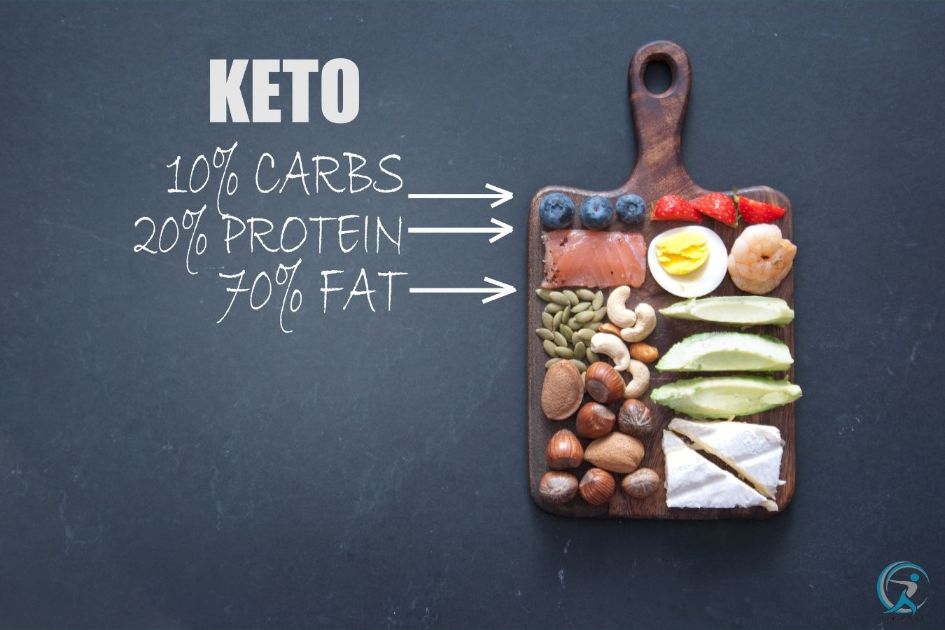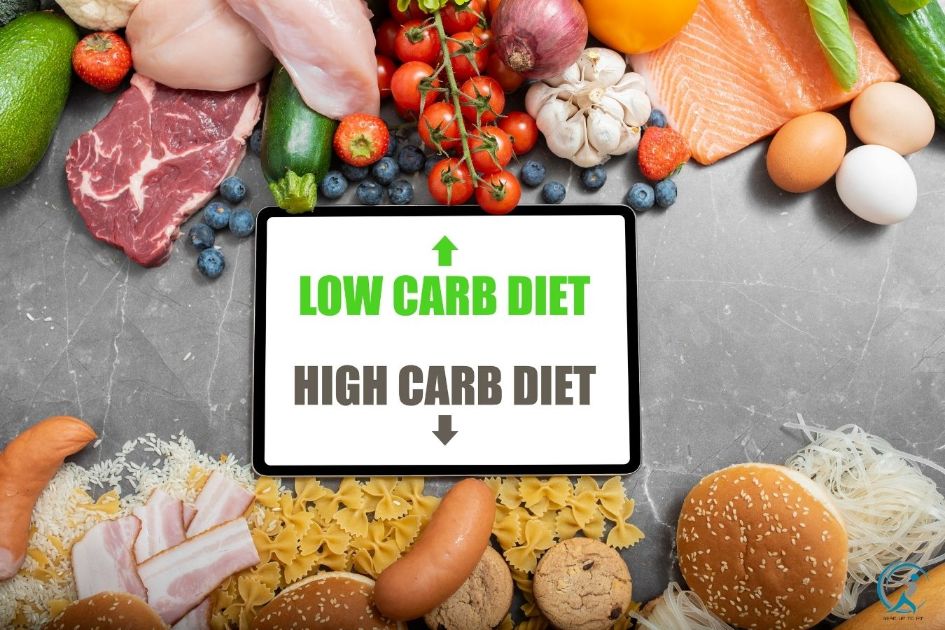Carb Cycling for Weight Loss isn’t your average dietary fad—it’s more like a metabolic MacGyver, using carbs smartly to help you slim down without feeling deprived.
Why should you stick around? Because you’re about to uncover the secret to enjoying your carbs and losing weight too. It’s time to power up your weight loss journey with a method that’s as effective as it is enjoyable. Get set to learn how cycling your carbs can keep your taste buds happy and your waistline trim!
Key Takeaways
- Carb cycling for weight loss: a smarter way to shed pounds.
- Alternating between high and low carbohydrate intake can optimize fat burning and boost muscle growth.
- This strategy regulates insulin levels and improves metabolic flexibility.
- Proper planning and macronutrient tracking are key to successful carb cycling.
- Consult a healthcare professional or registered dietitian before starting any new nutrition plan.
- Combine carb cycling with exercise and a balanced diet for sustainable weight loss and better overall health.
Understanding Carb Cycling for Effective Weight Loss
Carb cycling is gaining momentum among fitness enthusiasts as a strategic approach to weight loss that does not require giving up carbs entirely. This method involves alternating between high carb days and low carb days, which can help you maintain a calorie deficit necessary for weight loss while still fueling your body for workouts.
The Basics of a Carb Cycling Diet
Incorporating a carb cycling diet into your routine means you manipulate your carbohydrate intake to work with your body’s natural energy needs. On intense workout days, a high carb day replenishes glycogen stores, providing the energy required for your session and recovery. Contrastingly, low carb days are often scheduled on rest days or light activity days, which can contribute to a calorie deficit without compromising muscle mass.
Benefits of High Carb and Low Carb Days
Understanding the balance between high carb and low carb days is crucial. High carb days stimulate insulin release, which aids in muscle growth and recovery. They can also boost your mood and energy levels, making them ideal for heavy lifting or long cardio sessions. On the other hand, low carb days help promote fat burning, as your body turns to stored fat for energy in the absence of dietary carbs.
Optimizing Fat and Protein Intake in Carb Cycling
While focusing on high carb and low carb days, it’s equally important to monitor your fat intake and protein intake. During low carb days, increasing healthy fats can help maintain energy levels, while keeping protein intake consistent is vital for muscle repair and growth. A balanced meal plan that includes complex carbs, healthy fats, and adequate protein is essential for optimizing body composition and achieving weight loss.
Creating Your Carb Cycling Meal Plan
Designing a meal plan tailored to your carb cycling regimen requires understanding the difference between simple carbs and complex carbs. Complex carbs found in whole grains and vegetables should be the focus on high carb days, while simple carbs are best minimized. Aligning your calorie intake with workout intensity ensures that you’re fueling your body adequately on high carb days and capitalizing on fat loss on low carb days.
Sports Nutrition and Carb Cycling
Carb cycling isn’t just about weight loss; it’s part of a broader sports nutrition strategy that supports overall health and body composition goals. It’s essential to consider the quality of carbohydrates and the timing of their consumption. Consuming carbs post-workout on high carb days can enhance muscle recovery, while focusing on fibrous vegetables and lean proteins on low carb days supports sustained energy levels without excess calories.
Carb Cycle and Intermittent Fasting

A carb cycle is an extreme form of intermittent fasting where people eat no carbohydrates for several days before eating high amounts of them again. People who want to start losing weight often use carb cycles because they’re easier than regular IF (intermittent fasting).
Carbs provide most of our bodies’ fuel; they contain four calories per gram but give us lots of energy. Proteins help repair tissues and keep bones strong. Fats supply the essential fatty acids we need every day. We get some fat from meat, dairy products, nuts, seeds, oils, and avocados. Experts suggest eating no more than 30 percent of total calories from saturated fat, mainly from animal sources like red meats, butter, whole milk, cheese, ice cream, etc. Most people overeat fat. They consume between 35% and 40% of their calories from fat!
Some carbohydrates are better for you than others. They include dairy products, beans, grains, fruits and veggies, and other plant-based foods. They can also be added to some processed foods like sugar and starch.
Alternating Carbs
Digesting carbohydrates converts them into glucose which your body then uses to power its activities. If you stop relying on carbs for fuel, you may feel less hungry and crave fewer sweets.
Carb Cycling involves alternating between periods where carbohydrates (carbs) are eaten in large amounts and then eating fewer carbs for several weeks at a time. You might
If you’re working hard, it’s normal to eat lots of carbohydrates—2 to 2.5 grams per pound. You may even be eating up to 3 grams per pound!
For each pound of your body weight, you may eat 5 grams of carbohydrate on low-carb days. A no-carb day is one where you don’t consume any carbohydrate foods at all.
If you want to lose weight fast, you may be able to consume between 50-100 grams of carbohydrates per meal. However, if you exercise regularly, you might need between 125-175 grams of carbohydrate daily. And finally, some people find they get better results by consuming no more than 200-250 grams of carbohydrates per day.
Why Do People Use Carb Cycling?
People who use carb cycling typically follow it to help them lose weight. By eating fewer calories per day, you’ll naturally lose weight. However, some people choose to use carb cycling because they think it will make them healthier. Some studies show that people who use carb cycling tend to eat less saturated fats and cholesterol. Other studies show that people who are using carb cycling tend to have lower blood pressure.
Is Carb Cycling Safe?




Carb cycling is safe because it helps you lose weight and keep it off for life. However, some people think carb cycling is dangerous because they don’t understand how metabolism works. The truth is that the body needs carbs to burn fat. If you overeat protein, your body will store it as fat instead of burning it. So, eating too many carbs is not dangerous.
Are There Any Health Benefits Associated With Carb Cycling?
Some people believe that carb cycling improves insulin sensitivity. Insulin resistance occurs when your cells become resistant to insulin. This causes your body to store more fat instead of burning it off. Eating carbs increases insulin production. This means that you will have raised insulin levels after eating carbs. Some experts say that insulin is what makes us crave food. When you increase insulin levels, you may begin craving foods that contain carbohydrates. Carb cycling has been shown to improve insulin sensitivity. This means that your body becomes better able to metabolize carbohydrates. As a result, you may be able to reduce your risk of diabetes.
What are the effects of carb cycling
Carb cycling helps keep your metabolism healthy during weight loss.
Your body reacts to a reduction in calories, such as when you try to lose weight. Take this example:
- Your Basal Metabolic Rate (BMR), drops
- Exercise makes you use less energy
- Your daily activity, excluding workouts, tends to decline naturally ( you move less than you realize).
To maintain your weight loss, you must continue to reduce the amount of food you eat.
Example: For a time, let’s say that you begin a 2000 calorie per day diet. You might notice that this diet is not working overtime. To kickstart weight loss, you may need to reduce your intake by 1,800 calories.
This is metabolic adapt, and it’s obvious why it’s problematic.
Your metabolism will adapt to your needs, so you’ll need to reduce your food intake.
The more you eat, the harder it will be to reach your goals and maintain weight loss.
Carb cycling advocates argue that the approach can hinder metabolic adaptation.
This is the reason: Mixing high-carb/high-calorie foods regularly “jumpstarts your metabolism” and prevents it from adapting.
This claim is not supported by solid evidence, but it hasn’t even been disproven.
Carbocycling may be able to regulate hormones that are affected by fat loss.
Stressful dieting can cause hormonal imbalances. Specifically:
- Leptin
- Thyroid hormones
- Reproductive hormones Testosterone, estrogen
Leptin is a concern if you are trying to lose weight. (Even though thyroid hormones and testosterone seem to get all attention, estrogen is still a concern.
Leptin is released by fat tissue and plays a crucial role in metabolic adaptation and hunger.
Your body produces more leptin when you have more body fat because your brain needs leptin to tell your appetite centers whether you’re hungry enough to eat. Many factors affect weight loss including exercise, sleep, stress, hormones, and genetics.
Leptin is released by fat cells when they’re full; if you eat less than usual, then your body won’t be able to tell whether there’s enough energy
This signals to your brain that you must eat to avoid starvation.
The bottom line: Leptin is the reason you feel hungry even if you eat less.
The “master controller” of all hormones is Leptin, which means that thyroid and reproductive hormones are affected when leptin levels drop.
What is the relation with carb cycling?
This is how it works: Our leptin levels temporarily increase if we eat more carbohydrates (called “refeeding”).
This would be hypothesized, tell your brain you are well-fed. A temporary decrease in hunger.
If you’re having trouble sticking to a lower carb day because you don’t think you’ll get enough protein without eating carbs at lunchtime, then taking a small snack before noon could help. You may find yourself feeling better if you eat something like an apple instead of just drinking coffee for breakfast.
Although there is some anecdotal evidence to suggest that people who use meditation techniques report better mental health than others, we don’t know if these effects persist after they stop using them. There is no strong scientific evidence to show that meditation has any lasting effect on our brains.
If you eat lower-carb/lower-calorie foods, it can be very beneficial to your physical and mental health to eating a higher-carb/higher-calorie day for the purpose. (Who doesn’t love a “cheat” day?)
Carbocycling might help you stick to a lower carbohydrate intake.
Low-carb diets are effective in fat loss, particularly for those with type 2 diabetes or metabolic syndrome.
What is low carb?




The ketogenic diet is a popular low-carb option. It is very low in carbs and fat (usually less than 10% carbohydrate and more than 60% fat).
Low-carb or ketogenic diets effectively fat loss, but most people don’t like them for long periods. This is true for all restrictive eating styles.
People who want to keep their carb intake at an acceptable level might consider alternating between high-carb and medium-low-carb days. This is what is known as a cyclical Ketogenic Diet.
It could be described as: You eat ketogenic most time, but you have short mini-breaks that last for a day or so where you can enjoy high-carb meals.
A low-carb diet may allow for carb cycling to improve athletic performance.
Fat-adapted athletes may also use the ketogenic diet. Athletes often use a ketogenic diet to be strong>fat adapted/strong>.
It sounds good to burn more fat. How does it impact your exercise performance?
This deserves some explanation.
Here’s some background: Your body relies heavily upon glycogen to fuel endurance training sessions.
Glycogen stores provide fuel for muscles during physical activity. If you exercise for longer than usual, your body may not be able to hold enough glycogen to keep going at full speed. You’ll need to stop working out before you get tired.
Endurance athletes need extra calories during races because they’re burning lots of glycogen (stored carbohydrate) for fuel. They typically eat 60–90 g carbs/hour during competition.
Fat adaptation
This is where fat adaptation may be helpful.
It’s easy for your body to store lots of fat because fat cells don’t require any energy to function.
Even if you’re an extremely thin person, you’ll likely store 15 percent more fat than carbohydrates.
If fat-adapted, your body will rely more on fat (instead of carbs) to fuel endurance training.
This would eliminate the need to deal with the discomfort (and possible GI distress) associated with consuming energy gels every 90 minutes during more extended exercises. It might also make it less likely that you will “bonk.”
Some people believe that being fat-adapted could improve their exercise performance and/or recovery.
Remember that the above information was not meant to be an exhaustive list of everything there is to know about ketosis and athletic performance.
How does carb cycling fit into this equation?
Here’s how it works: You start by eating a low carbohydrate/high fat (keto) diet for several days. Then, if you want, you can add some carb back into your diet.
It’s best to eat carbs during exercise if you want to maximize performance. However, doing so won’t compromise the potential health benefits of following a low-carb diet.
With this combination, you’ll get a lot of energy to burn off either carbs or fats.
However, it is essential to remember that there is no current evidence supporting the ketogenic diet’s performance benefits on a large scale.
According to our current understanding, cycling through cycles of low carb/high-fat eating may be more trouble than it’s worth for most people who adopt a cyclical ketogenic approach.
Carbocycling may increase muscle gain, but not fat gain.
Muscle growth almost always comes with fat gain.
Some carb-cyclists believe insulin is the key to building muscle and not gaining too much fat.
Blood glucose rises when we consume carbs because they cause our bodies to release insulin.
Regular insulin helps regulate your blood glucose level. It’s also necessary for building muscles and storing carbohydrates (glycogen).
This is the hypothesis:
- You can benefit from insulin’s muscle-building properties by eating high carbs during your resistance training
- By eating low carb during rest and conditioning days, you can lose weight and increase insulin sensitivity.
This is the top-level version. Is the reality? But the truth is that it’s much more complex than that, and there are no diet studies to support it.
Carb cycling plan
A carb cycling plan is a diet that cycles carbohydrates during the day and then reduces them at night. This cycle helps stabilize blood sugar levels and burn fat faster. To do this, eat carbs first thing in the morning and lower them later in the day. The best foods for carb cycling include rice, pasta, bread, potatoes, and starchy vegetables like sweet potatoes. You are reducing carbs after dinner makes you feel hungrier and causes cravings for sweets. Try eating healthy snacks such as nuts, fruit, oatmeal, yogurt, and cheese.
Practical Tips for Implementing Carb Cycling
To effectively implement carb cycling into your weight loss strategy, it’s essential to plan. Start by determining your high-carb and low-carb days based on your workout schedule. High-intensity training days should coincide with high-carb intake to support energy levels and performance. On these days, prioritize complex carbohydrates that provide sustained energy release, like sweet potatoes, quinoa, and oats.
On low-carb days, focus on lean proteins and healthy fats to maintain muscle mass and encourage fat burning. Foods like chicken breast, avocados, and nuts are excellent choices. Remember to keep your caloric intake in check; even on high-carb days, consuming more calories than you burn will impede weight loss.
Finally, remember that consistency is key in any dietary approach. Regular monitoring and adjustments based on progress are essential components of a successful carb cycling plan. Whether you’re new to carb cycling or looking to refine your approach, these guidelines can help you tailor your diet to your specific weight loss goals.
What Foods Should I Eat During My Low-Carb Day?




The key to successful carb cycling is to eat quality foods. You should always avoid processed foods and sugary treats. Instead, choose whole foods such as fresh fruits, veggies, lean meats, fish, eggs, beans, nuts, seeds, and unsalted butter or olive oil. For breakfast, try eating oatmeal with fresh berries or an egg scramble with spinach. Have a salad made from lettuce, cucumbers, tomatoes, red peppers, and avocados for lunch? Dinner could consist of grilled chicken breast with steamed broccoli or salmon filet with asparagus.
FAQs
How Many Carbs Should I Consume On Each Meal?
The number of carbs you should consume depends on what kind of food you eat. If you want to lose weight, then you need to limit yourself to 50 grams per meal. This amount of carbohydrates leads to a reduction in hunger pangs. However, if you don’t want to lose weight, you can consume up to 150 grams per meal.
What exactly should you eat when carb cycling?
Carb cycling means eating carbs for one week, fasting for two weeks, and eating carbs again. This cycle is done several times throughout the year. The goal of carb cycling is to help you lose weight faster. When you fast, your body goes into ketosis, which helps burn fat instead of storing it. During the first phase of carb cycling, you want to avoid high-carb foods such as pasta, bread, rice, potatoes, and sugar. Instead, focus on protein sources like chicken breast, eggs, fish, beans, nuts, and seeds. These foods also provide fiber. Fiber can help keep you feeling full longer so you won’t feel hungry. It also helps move things through your digestive system.
Carb Cycling Meal Ideas
Carb cycling meal ideas include eating carbs at breakfast, lunch, and dinner. Breakfast should be high in protein, while lunch and dinner should contain carbohydrates. This helps keep blood sugar levels stable throughout the day. You might find it helpful to write down your meals, so you remember to consume certain foods. Also, try to avoid foods with added sugars or artificial sweeteners. Try to stick to whole foods whenever possible. For example, eat fruits instead of fruit juices. Use natural sweeteners like honey, maple syrup, or coconut sugar.
How Many Carbs Should I Eat Per Day?
If you’re following a healthy diet plan, you may only need about 40 grams of carbs each day. That’s equal to 1/2 cup of pasta, 2 slices of toast with butter, or a small bowl of cereal. Most people do better with 50 to 60 grams of carbs each day and still maintain their energy level.
How Long Should I Fast For?
The length of time you fast depends on how much weight you want to lose. If you plan to lose 10 pounds or less in total, you may only need to go without carbs for four days. If you’re trying to lose 20 pounds or more, you may need to fast for eight days. You may also decide to do a combination of both short-term and long-term. If you’re not sure how many days you should fast, talk to your doctor about this option.
Can I Eat Carbs On Low-Carb Days?
You can eat carbs on low-carb days, but you shouldn’t overdo it. Even though you aren’t consuming any carbs during the fasting period, you still want to stay within your calorie range. Your best bet would be to stick to around 100 grams of carbs per day. Remember, you can always add back in carbs once your fasting period ends.
Should I Drink Water Or Juice While Fasting?
Drinking water while fasting is fine, but drinking juice could cause problems. Some juices contain natural sugars called fructose. Fructose is found naturally in fruit, but most commercial juices don’t have enough. Fruit juices tend to be very sweet. They also contain other ingredients that can affect your blood sugar levels. For example, citrus fruits can raise your blood pressure. Other juices contain artificial sweeteners that may affect your metabolism.
Do I Need To Be Super Hydrated While Fasting?
It’s essential to drink plenty of fluids while fasting. However, you don’t need to consume large amounts of water. A good rule of thumb is to aim for 2 liters of fluid each day. This amount is equal to roughly 1/3 cup of liquid. Don’t forget to include drinks containing caffeine, alcohol, and sugar. People who consume these beverages often end up dehydrated because they don’t realize that their bodies don’t absorb them well. Dehydration can lead to headaches, fatigue, dizziness, and even muscle cramps.
Can I Exercise While Fasting?
Exercise can be beneficial when fasting. Studies suggest that exercise speeds up your metabolic rate. This allows your body to burn more calories at rest. Exercising also strengthens muscles and increases bone density. However, if you are exercising intensely, you may experience dehydration. In addition, your heart rate will increase. This can make your blood pressure rise.
Alex is a fitness aficionado, empowers others towards healthier, active lives through small, sustainable changes for lasting results. Visit Gearuptofit.com for insightful tips and resources to enrich a balanced lifestyle.
